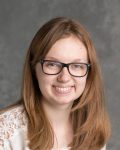MEG
Research team
In collaboration with Nottingham University, we are leading the development and application of a new generation of wearable magnetoencephalography (MEG) systems.
The new technology is based around optically pumped sensors (OPMs) which, unlike traditional MEG systems, do not require cryogenic cooling. It is now possible to measure field changes much closer to the scalp, increasing field magnitude significantly and ensuring maximal signal for any head-size. By minimizing the static field around the subject’s head, we have shown that it is now possible to produce electrophysiological images of brain function whilst subjects move naturally (Boto et al., 2018).
Besides the neuroscientific avenues this technology opens up it also has significant clinical potential. MEG has long been used for pre-surgical mapping and spike localisation in epilepsy. In children, the earlier epilepsy surgery can take place, the better the prospects for normal development. However, the surgical planning stage is often delayed until the child can remain still.
We have replicated pre-surgical language mapping paradigms at Great Ormond St Hospital using this motion-robust OPM technology (Tierney et al., 2018) and now work towards our first cohort of younger subjects. In adults, where the main benefits are improved spike localization and longer duration recordings, we are working with colleagues at the National Hospital for Neurology and Neurosurgery to validate the technology.
Methodologically, the main challenges will be
- To devise new field-nulling methods to allow greater freedom of movement within the room.
- To push the spatial and depth resolution made possible from the increased sensitivity and longer-term recordings.
- To use these absolute magnetic field sensors to measure static fields generated by the human brain.
Equipment
We will shortly have an array of 50 of the latest OPM devices and we have installed a dedicated magnetically shielded OP-MEG suite at our Centre.
We are part of an Innovate UK funded partnership with Magnetic Shields Ltd, The University of Nottingham and Great Ormond St Hospital. This partnership will install a new affordable magnetically shielded room at Young Epilepsy (a residential centre for young people with epilepsy).
The MEG imaging software developed by the methods group is distributed within the SPM package.
Team
Research areas
- View all publications by the MEG team


